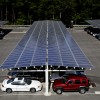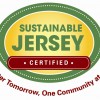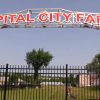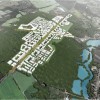Farming and Agriculture
Farmland is a key economic and environmental resource for New Jersey, ranking third in importance to the state’s economy behind pharmaceuticals and tourism. A strong farm economy not only supports employment, commerce and agriculturally related tourism, but also strengthens the state’s local food system, helping to ensure access to healthy food for all residents.
Between 2012 and 2017 the number of farms in New Jersey grew by 9%, bolstered mainly by an increase in the number of farms of fewer than 100 acres. Market value of agricultural products in the state also grew by 9% during that time, to almost $1.1 billion. This is a reversal of previous trends: Between 1982 and 2007, the state had lost approximately 27% of its agricultural land to development. Between 1997 and 2002 the trend had slowed to 6%, and it slowed again to less than 3% between 2002 and 2007.
Smart growth supports the preservation of farmland by directing development away from agricultural land and preserving that land for farm use. A range of mechanisms at both the state and local levels – including low-density residential and agricultural zoning, preservation easements, transfers and purchases of development rights, cluster development, development buffers, right-to-farm legislation, permitting farm stands by right and favorable tax policies for agricultural production — have been used to prioritize the preservation of agricultural land.

New Jersey Assembly overwhelmingly approves the cluster development bill, which could see a Senate vote as soon as May 13.

The process that will lead to adoption of the State Strategic Plan is moving forward once again, with a final public hearing now scheduled.

Incentives for solar facility development on brownfields and landfills should be made more attractive than incentives to develop on farmland and other open lands.

A new report from New Jersey Future examines the use of non-contiguous clustering in nine New Jersey municipalities as a land-preservation tool.

New Jersey is the first state in the nation to have a comprehensive sustainability program that supports community efforts to reduce waste, cut greenhouse gas emissions and improve environmental equity. Of the state’s 566 municipalities, 359 are registered and working toward Sustainable Jersey certification, and nearly 75 percent of New Jersey’s population lives in one of those communities.

2016 Smart Growth Awards: One person’s vision has led to the transformation of an abandoned lot in East Trenton into an urban farm that will provide food, job training and education to nearby residents.

This report from New Jersey Future examines the use of non-contiguous clustering as a land-preservation tool in nine New Jersey municipalities. May 2012.

Some frequently-asked questions about how smart growth would affect New Jersey’s future development, including how it affects traffic, taxes, and land preservation.

Trransfer of development rights (TDR) and clustering are tools that municipalities in New Jersey can use to direct growth and preserve open space.

Be it through open space and farmland preservation, economic development, or civic design initiatives, the Township of Eastampton is consistent in its pursuit of a smart growth.
See all New Jersey Future Blog posts and articles in this category »











